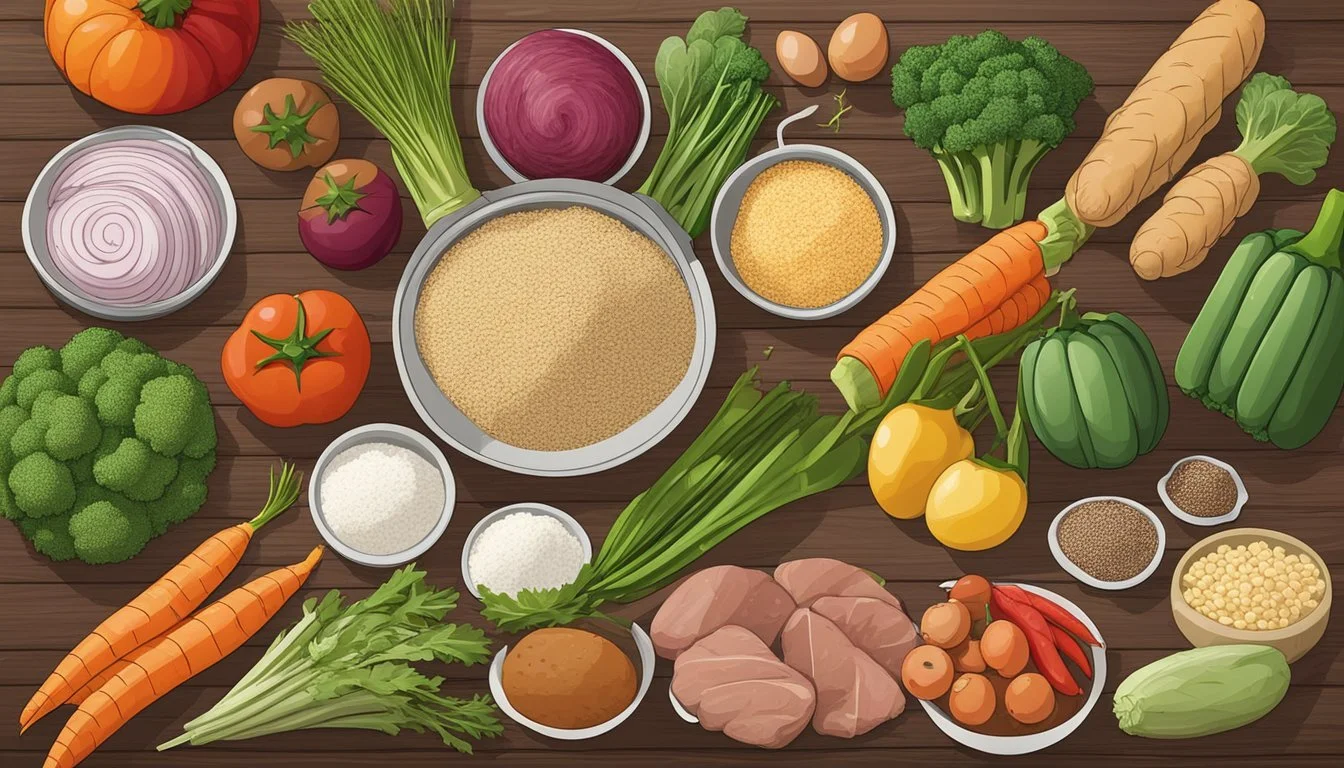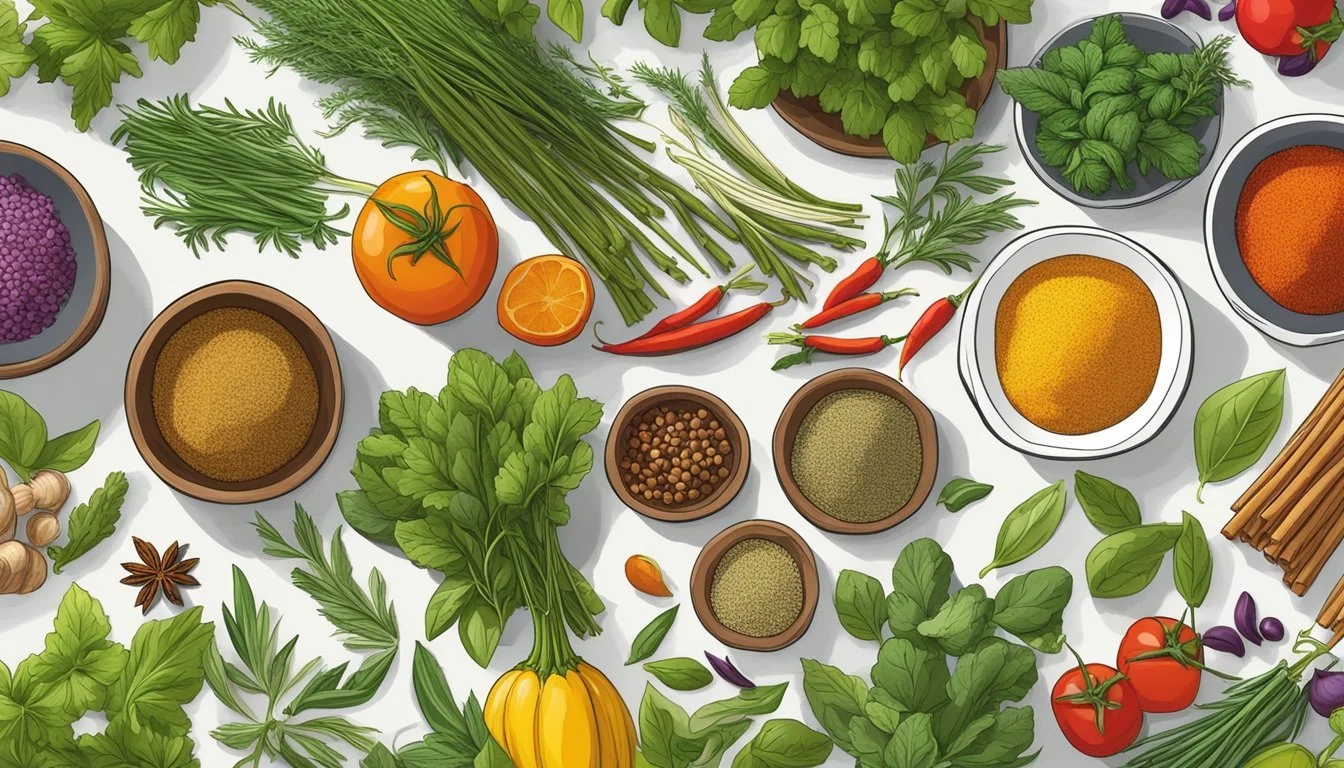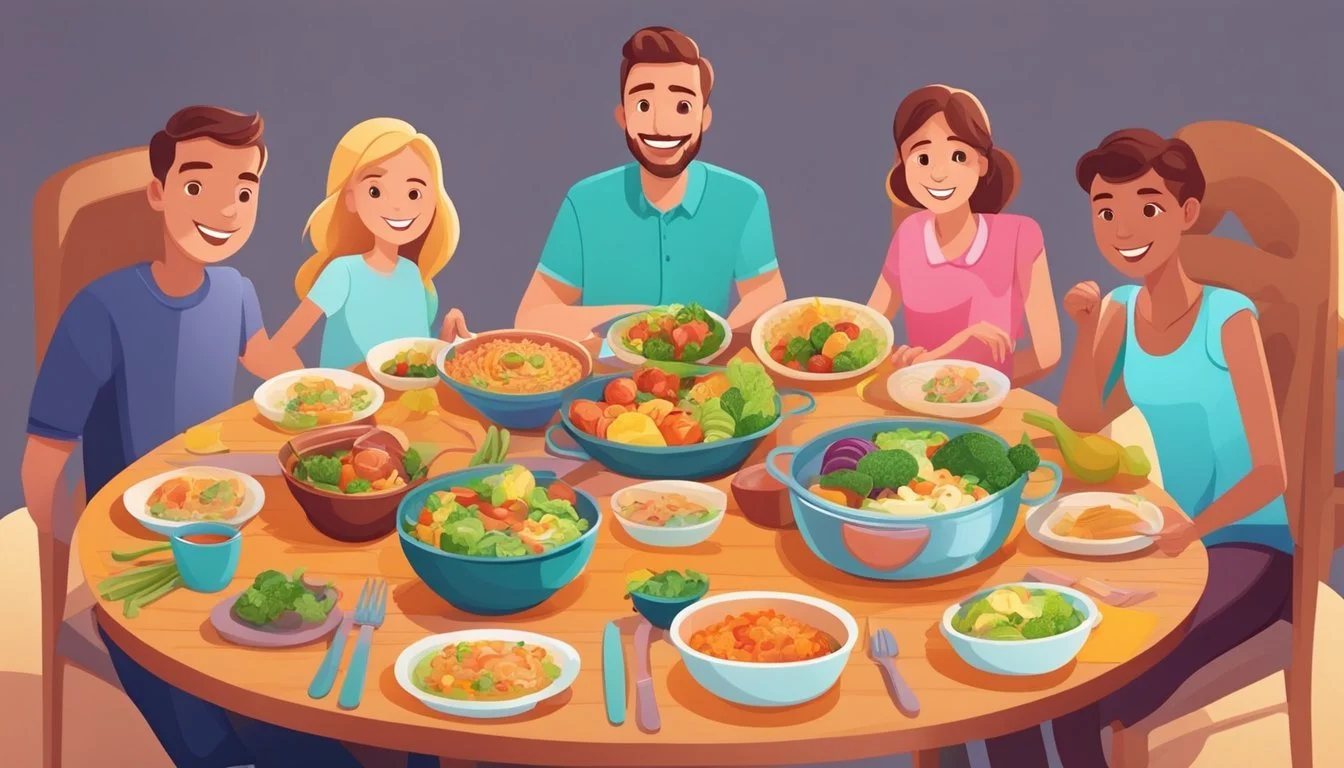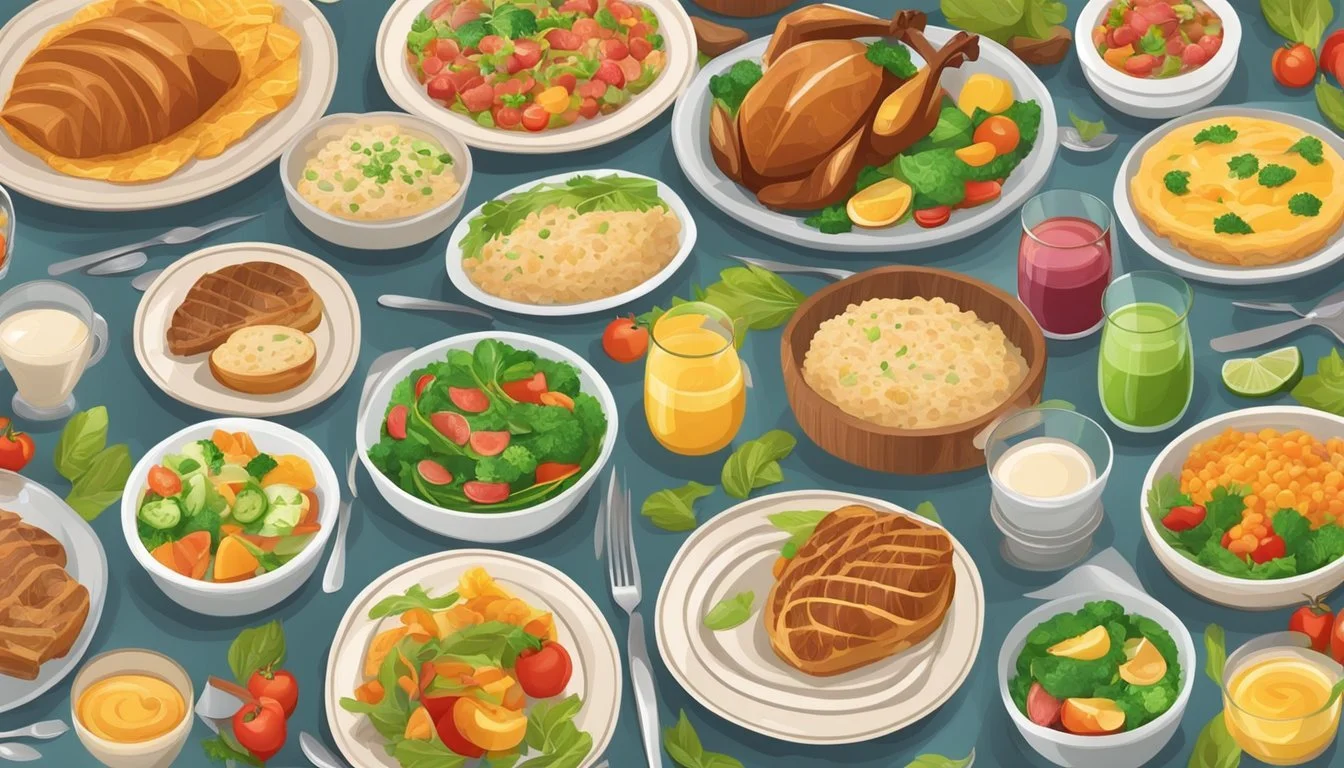Grain-Free Dinner Recipes
10 Family Favorites for Wholesome Meals
Embracing a grain-free diet can be both a necessity for some due to dietary restrictions and a conscious lifestyle choice for others seeking to explore health benefits. Dinner (What wine goes well with dinner?) time is a particularly challenging meal to cater to diverse preferences while ensuring that nutritional needs are met for all family members. The grain-free movement, however, has gained considerable traction, leading to an abundance of recipes that are not only healthy but also flavorful and satisfying for every palate. These recipes offer a variety of alternatives that steer clear of grains yet promise a delightful dining experience that appeals to adults and children alike.
Crafting a meal that the whole family will enjoy can seem daunting, especially when removing a common ingredient such as grains. However, the array of available grain-free recipes means that dinner can still be a time when everyone gathers around the table for a delicious and nourishing meal. Fresh vegetables, lean proteins, and clever use of spices and herbs become the stars of these dishes, ensuring that each dinner is as hearty as it is wholesome. Whether one opts for a veggie-packed stir-fry, a protein-rich stew, or a creative twist on pasta using vegetable noodles, these grain-free dinner ideas are designed to satisfy and sustain.
The key to a successful grain-free dinner lies in the balance of flavors, textures, and nutrients. Recipes often include bright salads with homemade dressings, zesty entrees featuring fresh herbs (how long do fresh herbs last?) and aromatic spices, and hearty main courses that substitute grains with nutrient-dense alternatives like cauliflower (how long does cauliflower last?) rice or spiralized vegetables. By focusing on whole foods and fresh ingredients, these grain-free dinners not only cater to specific dietary needs but also improve overall health without sacrificing the joy of a shared family meal.
Exploring grain-free dinner recipes can open up a world of flavorful and nourishing culinary possibilities while aligning with a grain-free lifestyle. When considering these recipes, it's important to separate grain-free myth fact and understand the potential health benefits associated with this dietary approach.
For individuals managing grain-free autoimmune diseases, incorporating grain-free dinner recipes can offer a supportive and health-conscious way to enjoy satisfying meals. Additionally, exploring the potential effects of a grain-free diet on grain-free endurance and grain-free fertility can provide valuable insights into the holistic impact of these recipes.
Understanding the long-term pros and cons of a grain-free diet is essential when introducing grain-free dinner recipes into one's culinary repertoire. By being mindful of the nutritional benefits and diverse flavors that these recipes offer, individuals can make informed choices that align with their overall health and well-being goals.
Furthermore, incorporating grain-free alcoholic beverages mocktails into these dinner recipes can provide a delightful and inclusive way to enjoy a variety of flavorful drinks while adhering to a grain-free lifestyle.
By embracing the health benefits of grain-free introduction through dinner recipes, individuals can savor the joys of nourishing and delicious meals that support their well-being.
Discovering Grain-Free Diets
Grain-free diets have risen in popularity due to their association with certain health benefits and compatibility with dietary philosophies like Paleo and Whole30. Grain-free means excluding all grains, such as wheat, corn, rice, and oats, focusing instead on fruits, vegetables, proteins, and fats. Advocates suggest that such diets reduce inflammation and blood sugar spikes.
Those exploring healthy grain-free options often discover an emphasis on real food ingredients. This means foods that are minimally processed, rich in nutrients, and closer to their natural state. By choosing grass-fed meats, wild-caught fish, and a variety of colorful vegetables, individuals can craft a wholesome, balanced meal.
Embracing a grain-free lifestyle, however, need not exclude vegetarians or vegans. A plant-based diet can also be grain-free, with staples like legumes, seeds, nuts, and plant-based proteins taking center stage.
Popular Grain-Free Diets Core Principles Paleo Focuses on foods presumed to have been eaten by early humans: meats, fish, fruits, vegetables, nuts, and seeds. Excludes dairy, grains, and processed foods. Whole30 A 30-day diet that eliminates sugar, alcohol, grains, legumes, soy, and dairy to reset the body's reactions to certain foods.
While some individuals may choose a grain-free diet for personal health reasons, it is important to note that grains are not inherently unhealthy. Whole grains are a good source of fiber and other nutrients. Therefore, consulting a healthcare provider before making significant dietary changes is recommended. The objective is to maximize nutrition and enjoyment through a diverse and flavorful diet.
Benefits of Grain-Free Meals
Grain-free meals can offer a variety of benefits, ranging from improved digestion to potential weight management. Each subsection explores a unique advantage that such a dietary choice might provide.
Nutritional Advantages
A grain-free diet often leads to increased consumption of vegetables and protein-packed foods. Vegetables like sweet potatoes (What wine goes well with sweet potatoes?) and cauliflower are nutrient-dense and serve as excellent grain alternatives. They absorb flavors well and provide a variety of vitamins and minerals. Protein sources such as meat, fish, or even vegan options like tofu and tempeh, contribute to a feeling of fullness and can assist in muscle repair and growth.
Vitamins and Minerals: Increase through higher vegetable intake
Protein: Sufficient amounts maintained through animal or plant sources
Digestive Health
People may choose grain-free meals if they have sensitivities to gluten or other grain components. Removing grains can lead to fewer digestive issues for those with such sensitivities or with conditions like celiac disease. A diet rich in vegetables and proteins can also support a healthy gut microbiome, contributing to overall digestive health.
Gluten Sensitivity: Addressed by eliminating grains
Healthy Gut: Supported by nutrient-rich, easily digestible foods
Weight Management
Grain-free meals often result in lower consumption of processed foods and unnecessary carbohydrates, which can aid in weight control. Healthy fats and proteins maintain satiety, which can reduce overall calorie intake. Additionally, many grain-free recipes are well-balanced, ensuring that portions are filling yet calorically appropriate.
Processed Foods: Limitation helps avoid excess calorie intake
Balanced Portions: Contribute to a sustainable weight management strategy
Ingredients for Grain-Free Cooking
When preparing grain-free meals, selecting the right combination of ingredients not only ensures nutritional balance but also enhances the flavors in your dishes. Here, we discuss the essentials of grain-free cooking, focusing on healthy fats, quality proteins, and a variety of fresh vegetables.
Choosing Healthy Fats
Healthy fats are crucial for flavor and satiety in grain-free dishes. They can come from:
Oils: Olive oil and avocado (how long does avocado last?) oil are excellent for dressings and low-heat cooking.
Nuts and Seeds: Almonds, walnuts, and chia seeds are nutrient-dense options.
Others: Coconut milk and ghee are also popular choices for their distinctive tastes and cooking properties.
Finding the Right Proteins
Proteins are the building blocks of a satisfying grain-free meal. They can be sourced from:
Animal Proteins: Grass-fed beef, free-range chicken, and wild-caught fish.
Plant-Based Proteins: Legumes like beans (including soybeans) and lentils.
Selecting Fresh Veggies
An assortment of vegetables not only provides essential vitamins and minerals but also a variety of textures and flavors. Key vegetables include:
Root Vegetables: Like sweet potatoes and carrots, these are hearty and filling.
Others: Cauliflower can be used as a rice alternative, while leafy greens add color and nutrients.
Mastering Grain-Free Dinner Recipes
Incorporating grain-free recipes into dinner routines can be a delightful experience. These recipes focus on harnessing the natural flavors of ingredients and utilizing simple cooking methods to create nutritious and tasty meals.
Sheet Pan Wonders
Sheet pan meals offer the ultimate convenience for busy weeknights, requiring minimal cleanup and preparation time. Start by choosing a protein such as chicken or fish, and array it on the pan surrounded by a colorful medley of vegetables, seasoned to perfection. For instance, a chicken breast seasoned with herbs and nestled among Brussels sprouts and sweet potatoes can create a well-balanced grain-free dinner.
Key Components of a Sheet Pan Meal:
Protein: Chicken, fish, or tofu for a plant-based option.
Vegetables: Broccoli, bell peppers, zucchini, and other favorites.
Seasoning: Olive oil, garlic, rosemary, or thyme for flavor.
One-Pot Delights
One-pot recipes simplify cooking by bringing all components of a meal together in a single pot, preserving the flavors and nutrients. A robust chili or a hearty stew with chunky vegetables and protein like ground turkey or shredded chicken can satiate any appetite. A benefit of one-pot cooking is that it allows the diverse ingredients to meld together, developing a depth of flavor that is both comforting and satisfying.
Examples of One-Pot Meals:
Grain-Free Chili: Uses ground turkey, tomatoes, and a mix of beans.
Hearty Stews: Combine a protein with vegetables in a rich broth.
Grain-Free Tacos
Tacos can be easily adapted to a grain-free lifestyle through the use of lettuce wraps or grain-free tortillas. These wraps can be stuffed with a variety of fillings such as spiced shrimp, grilled chicken, or even a vegetarian combination of black beans and guacamole. The key to a successful grain-free taco is to focus on the freshness of the ingredients and the harmony of flavors within the fillings.
Grain-Free Taco Ideas:
Chicken Tacos: Seasoned chicken strips with a slaw and avocado.
Shrimp Tacos: Grilled shrimp with cilantro, lime, and diced tomatoes.
Flavor Profiles and Spices
When embracing grain-free cooking, the adept use of herbs and spices is crucial for creating rich and pleasing flavors. They can transform simple ingredients into a feast for the palate by providing depth, warmth, and complexity.
Herbs and Spices for Grain-Free Cooking
In the realm of grain-free recipes, certain spices are essential. Cumin, with its earthy and slightly bitter taste, often acts as the backbone in various dishes. It's particularly good in Mexican and Indian cuisines, where it can be used in everything from fajita seasonings to curry powders.
Turmeric, known for its brilliant yellow hue and subtle bitterness, is not only prized for its anti-inflammatory properties but also for the warm, peppery flavors it imparts. Its presence is felt in a myriad of spice blends and is a staple in Middle Eastern and South Asian cooking.
Cinnamon is often associated with sweet dishes, but its sweet and woody notes can provide a surprising balance in savory dishes too. One can find it prominently featured in recipes such as Moroccan-spiced chicken, where it offers warmth and complexity.
These spices do not work in isolation. They are most effective when thoughtfully paired with other ingredients to create a harmonized flavor profile.
Creating Balanced Flavor Combinations
Combining spices and understanding their impact on the overall dish is akin to a dance of flavors. It's important to consider both complementary and contrasting flavors to achieve a balanced taste without overpowering the primary ingredients.
Complementary Spices: Cumin pairs well with coriander, offering a balance between earthiness and citrus. Similarly, turmeric works seamlessly with ginger and garlic, enhancing its warm qualities without dominating.
Contrasting Spices: Cinnamon can be contrasted with a little heat, such as a pinch of cayenne, to give dishes an unexpected yet delightful kick.
To master grain-free cooking, experimentation and careful adjustment are key. One should start with small amounts, gradually building up the flavor until the desired intensity is reached. This ensures that spices enhance rather than overshadow the natural flavors of the food.
Baking Without Grains
When eliminating grains from one's diet, baking can present a challenge, but with a variety of grain-free flours and inventive substitutes, delicious and healthy baked goods are entirely possible.
Innovative Uses of Almond Flour
Almond flour serves as a nutrient-rich alternative to traditional wheat flour. It's particularly high in protein and vitamin E, making it a favorite for health-conscious bakers. One can make almond flour bread with a simple combination of almond flour, eggs, oil, and baking powder. Almond flour cookies are yet another treat, offering a satisfying texture with a subtly nutty taste, perfect for those on a grain-free diet.
Decadent Dairy-Free Chocolate Desserts
Chocolate desserts (What wine goes well with chocolate desserts?) need not be off-limits in a grain-free diet. By using dairy-free chocolate and combining it with other grain-free ingredients, one can create indulgent desserts like chocolate avocado mousse or coconut oil chocolate bars. These desserts not only cater to the grain-free requirement but also provide a delightful option for vegans seeking a hint of luxury without dairy.
Grain-Free Fillings and Toppings
The finishing touch to any baked masterpiece is often its filling or topping. Grain-free alternatives abound, with fruit compotes, nut butters, and coconut cream being popular choices. For a healthy twist, a baker might whip up a chia seed jam as a filling, or garnish a cake with a bold, citrus-infused coconut cream, ensuring that the grain-free creations are as luscious as they are satisfying.
Accommodating Special Diets
When planning grain-free dinners for a family, it's important to consider the distinct dietary restrictions and preferences that may be present. Whether your family follows a vegan, paleo, or Whole30 diet, there are tasty and satisfying options available that cater to these specific needs.
Vegan Grain-Free Options
For those following a vegan and grain-free diet, dishes that center around legumes, nuts, seeds, and a diverse range of vegetables are excellent choices. A Moroccan-spiced cauliflower and chickpea bake brings together the robust flavors of cumin and turmeric, while providing a protein-rich meal. An additional benefit is the ease of preparing one-pan meals, such as a sheet pan dinner with assorted root vegetables and a nut-based sauce for added richness.
Paleo-Friendly Dinners
Paleo diets eliminate grains entirely, focusing on what our ancestors might have eaten: whole, unprocessed foods. A paleo meal could feature grain-free spaghetti using spiraled butternut squash noodles, topped with a homemade tomato sauce and grass-fed meatballs. Seafood options, like a low-calorie shrimp scampi (What wine goes well with shrimp scampi?), can substitute traditional pasta with vegetable noodles, perfectly aligning with paleo guidelines.
Whole30 Approved Meals
The Whole30 program emphasizes whole foods and the elimination of grains, sugar, and dairy for 30 days. Dinner options can include a hearty vegetable stew simmered with a protein of choice, seasoned with herbs and spices that impart flavor without relying on sugar or dairy. A salad incorporating grilled chicken, a variety of greens, and a homemade vinaigrette dressing, avoids added sugars and grains while still delivering a filling meal. Whole30 approved meals prioritize the quality of ingredients and simplicity in preparation.
Kid-Friendly Grain-Free Meals
Grain-free meals can be desirable for families opting for a paleo lifestyle or for health-related reasons. When children are involved, the challenge is to create dishes that are both nutritious and appealing to younger palates.
Pizza-Inspired Dishes
Meatza: For a grain-free twist on pizza night, one can use ground chicken or beef to create a crust, adding a layer of sauce and their favorite toppings like mozzarella and veggies.
Cauliflower Pizza Bites: Small, bite-sized morsels made with a base of riced cauliflower and cheese can serve as both a delicious and fun meal for children.
Veggie-Packed Options
Using vegetables like carrots and sweet potatoes, families can prepare:
Carrot "Fries": Baked carrot sticks with a sprinkle of salt and favorite herbs offer a nutritious, crunchy side dish.
Sweet Potato Skillet: A comforting hash with sweet potatoes, apples, and a protein such as sausage links can become a family favorite.
One-Pot Wonders
One-pot meals simplify dinnertime without sacrificing taste.
Chicken & Veggie Stir-Fry: A high-protein dish using chunks of chicken, assorted bell peppers, broccoli, and a savory sauce.
Beef & Mushroom Meatballs: These can be served alone or in a tomato sauce, providing a hearty meal with a serving of veggies hidden inside.
By thoughtfully selecting ingredients and presentation, one can prepare grain-free dinners that are not only nourishing but also enjoyable for the whole family.
Planning a Grain-Free Week
Embarking on a grain-free week requires a bit of forethought and organization to ensure meals are not only nutritious and satisfying but also varied to cater to the entire family's palette. Below is a roadmap for a seamless transition to grain-free dinners.
Prepping for the Week Ahead
To successfully plan for a grain-free week, one should start by drafting a detailed meal plan that includes a variety of proteins, vegetables, and healthy fats, ensuring balance and diversity in nutrition. Families can opt for Moroccan-spiced chicken served with an array of roasted veggies or a hearty stew brimming with cauliflower, celery, and potatoes. A shopping list is crucial to this process:
Proteins: chicken, fish, eggs
Vegetables: sweet potatoes, carrots, cauliflower, celery, potatoes
Spices: cumin, turmeric, cinnamon
Healthy fats: olive oil, pistachios, walnuts
Flavor enhancers: dried cherries, pomegranate molasses, feta yogurt sauce
Organizing ingredients according to recipe usage simplifies the process. Families can wash and chop vegetables ahead of time, measure out spices, and portion out proteins to expedite daily meal preparation.
Storing and Reheating
Storage solutions play a significant role in maintaining the freshness of prepped ingredients and leftovers. Using airtight containers separates different components and extends their shelf life. Grains are often the convenient go-to for reheatable meals; however, grain-free dishes like casseroles or one-pan dinners with a protein and vegetable combo reheat well and retain their flavor profile.
Reheating tips include:
Casseroles: Cover with foil and reheat in the oven at 350°F to retain moisture.
Proteins: Gently reheat on a pan or in the oven to avoid overcooking.
Vegetables: Steam or sauté to revive texture and warmth.
To ensure food safety, it's important to cool and store meals promptly after dinner and reheat only once before consumption. With these strategies in place, families can enjoy satisfying grain-free meals throughout the week.
Expanding Beyond Dinner
Grain-free diets don't have to limit choices to dinner alone. One can find a plethora of delicious and nourishing options for every meal of the day.
Grain-Free Breakfast Ideas
For the first meal of the day, breakfast, individuals seeking grain-free options can enjoy creativity and satisfaction with these ideas:
Savory Breakfast Bowls: Layer sautéed spinach, cherry tomatoes, and a soft-poached egg, seasoned with herbs like chives or basil for a nutrient-packed start to the day.
Smoothie Bowls: Blend frozen berries, a handful of spinach, and chia seeds with coconut milk. Top with coconut flakes and raw cacao nibs for a refreshing and energizing breakfast.
Lunches Everyone Will Love
Lunchtime presents an opportunity to refuel without grains. Here are some grain-free lunch recipes that are sure to be crowd-pleasers:
Salad Wraps: Use large collard green leaves filled with shredded chicken, matchstick carrots, avocado, and a creamy tahini dressing.
Stuffed Avocados: Fill ripe avocado halves with a mixture of tuna salad, diced cucumbers, and fresh dill. Serve with a side of mixed greens for a healthy and hearty lunch.
Resources and Shopping Lists
Preparing grain-free meals requires planning and knowing where to find the appropriate ingredients. The resources listed below offer guidance on shopping to ensure a kitchen well-stocked with grain-free options.
Where to Shop for Grain-Free Ingredients
Consumers can source grain-free ingredients from a variety of locations. Health food stores often provide a wide range of options, including specialized flour alternatives and snacks. Local farmers' markets are excellent for acquiring fresh, organic produce, supporting the concept of real food in grain-free diets. For convenience, online retailers have expanded their selections, providing access to a broad spectrum of grain-free products with the added benefit of customer reviews to inform purchasing decisions.
Grain-Free Grocery List
Creating a comprehensive grocery list helps streamline the shopping process and ensures that all necessary ingredients for a healthy, grain-free meal are at hand. A well-constructed list should include:
Proteins:
Chicken
Fish
Beef
Eggs
Vegetables:
Sweet potatoes
Cauliflower
Carrots
Spinach
Zucchini
Fruits:
Apples
Berries
Citrus fruits
Healthy Fats:
Avocados
Olive oil
Nuts and seeds
Spices and Herbs:
Turmeric
Cumin
Cinnamon
Fresh herbs (e.g., parsley, cilantro)
Dairy or Alternatives:
Greek yogurt or coconut yogurt
Cheese or nut-based cheese alternatives
Shoppers should always check labels to ensure that items are genuinely grain-free, as some products may include grains in less obvious forms. Keeping this list handy, updated, and tailored to individual recipes planned for the week can make one's grain-free journey both satisfying and hassle-free.
Conclusion
Grain-free dinners offer an array of health benefits, with options that cater to various dietary preferences and nutritional needs. From Moroccan-spiced chicken featuring an ensemble of sweet potatoes and cauliflower to traditional Persian stews like Fesenjan, the versatility of grain-free recipes ensures that there's something for everyone. Families can enjoy a balance of vegetarian and meat-based meals, all packed with flavor and nutrients.
Advantages of Grain-Free Dinners:
Aligns with dietary restrictions
Rich in vegetables and proteins
Encourages culinary creativity
Recipes like the protein-packed plant-based dinners can satisfy even those with a keen palate for protein. Moreover, committing to a grain-free diet doesn’t necessarily mean a sacrifice in taste or diversity—the use of spices, herbs, and various cooking techniques can bring out the robust flavors in these dishes.
Finally, resources like grain-free cookbooks provide valuable guidance for families embarking on this culinary journey, offering a vast selection of recipes and substitution suggestions to tailor meals to specific needs and tastes. Whether one seeks sweet, savory, or a combination of flavors, grain-free dining can be a delightful and nourishing experience for the entire family.










